Inflection Point
An inflection point is a point where the graph of the function changes CONCAVITY (from up to down or vice versa).
It could be seen as a Switching point, which means the point that the Slope of function switch from increasing and decreasing. e.g., the function might be still going up, but at such a point it suddenly increases slower and slower. And we call that point an inflection point. 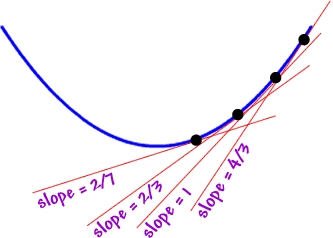
Algebraically, we identify and express this point by the function's First Derivative OR Second Derivative. 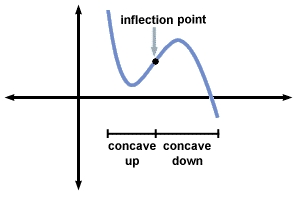
Example
 Intuitive way to solve:
Intuitive way to solve:
Draw a tangent line in imagination and move it on the function from left to right
Notice the tangent line's slope, does it go faster or slower or suddenly change its pace at a point?
We found it suddenly changed at point
c.
More definitional way to solve:
Looking for the
parts of concavity shapesSeems that
B-Cis a part ofConcave Down, andC-Dis a part ofConcave UpSo
Cis a SWITCHING POINT, it's ainflection point.
Example
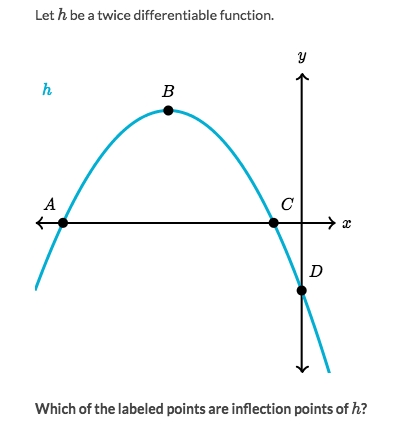 Solve:
Solve:
Looking for the
parts of concavity shapesThere's no changing of concavity shapes, there's only one shape: Concave down.
Example
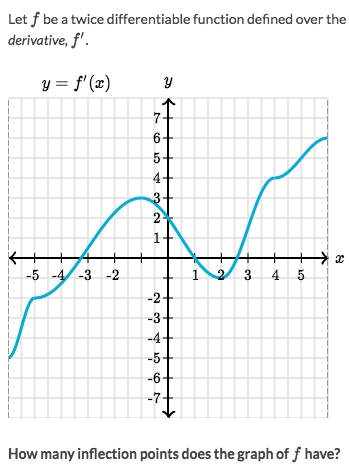 Solve:
Solve:
Notice that's the graph of
f'(x), which is the First Derivative.Checking
Inflection pointfrom 1st Derivative is easy: just to look at the change of direction.Obviously there're only two points changed direction: -1 & 2
Example
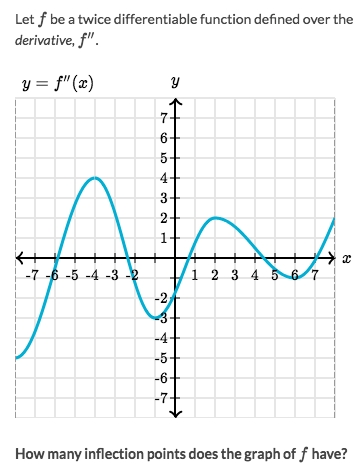 Solve:
Solve:
Mind that this is the graph of
f''(x), which is the Second derivative.Checking
inflection pointsfrom 2nd derivative is even easier: just to look at when it changes its sign, or say crosses the X-axis.Obviously, it crosses the X-axis 5 times. So there're 5 inflection points of
f(x).
Example: Finding Inflection points
 Solve:
Solve:
Function has POSSIBLE inflection points when
f''(x) = 0.Set
f''(x) =0and solve forx, gotx=-3.We now know the possible point, but don't know its CONCAVITY. This need to try some numbers from its both sides:

So it didn't change the concavity at point
-3, means there's no inflection point for function.
Example: Finding Inflection points
 Solve:
Solve:
Function has POSSIBLE inflection points when
f''(x) = 0.Set
f''(x) =0and solve forx, gotx=0 or 6.[Refer to Symbolab for
f''(x).](https://www.symbolab.com/solver/step-by-step/\frac{d^{2}}{dx^{2}}\left(3x^{5}-30x^{4}\right))We now know the possible point, but don't know its CONCAVITY. This need to try some numbers from its both sides:

So it didn't change the concavity at point
0, means only6is the inflection point.
Last updated